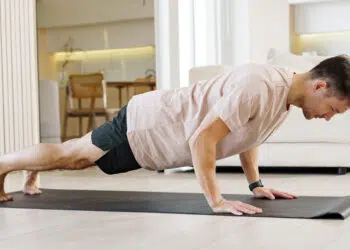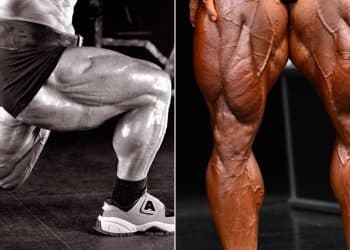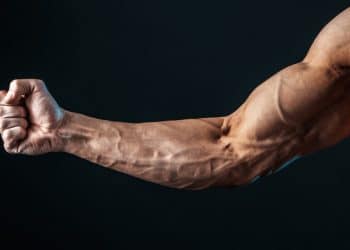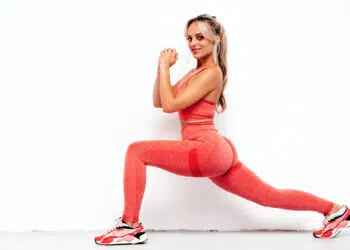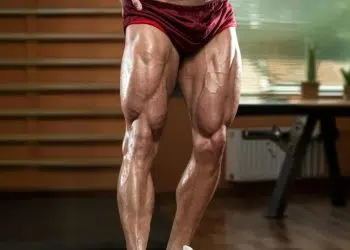With things being a little different for most of us at the moment, training, as usual, isn’t really possible. However, that doesn’t mean we can’t maximize what we are able to do. You may not have access to barbells, dumbbells, and other expensive equipment at home.
But what you/we do have, is knowledge and we have to apply that knowledge to reap the benefits. And one key resource that we and millions of others like to turn to when we need more knowledge (especially when it comes to fitness), is Jeff Cavaliere, M.S.P.T, CSCS.
Cavaliere’s YouTube channel Athlean-X has more than 10 million subscribers and you’d know why if you’re one of them. He recently put out a video breaking down “how to get brutally strong at home,” of which we’ve shared with you below.
The premise of the video is to provide you with knowledge about the smaller things that contribute to strength, which many people don’t focus on even when they do have access to weights. Cavaliere explained upfront that if you don’t have a solid foundation, it’ll eventually crack. And you don’t want that!
“If you can squat 600 pounds but you feel like a 600-year-old man the day after you do it, it’s not really serving its purpose,” he said at the start of the video.
Alright, let’s get into it…
Level Up Your Fitness: Join our 💪 strong community in Fitness Volt Newsletter. Get daily inspiration, expert-backed workouts, nutrition tips, the latest in strength sports, and the support you need to reach your goals. Subscribe for free!
Focus #1: Straight-arm scapular strength (S.A.S.S)
First and foremost, straight-arm scapular strength should be at the forefront of your strength training focus. The reason being is that you must be able to maintain a stable and strong shoulder girdle to be able to deadlift heavy poundages safely and effectively.
The arms should be able to remain rigid for the best possible result which will ensure an optimal, straight bar path. So how do you practice this if you don’t have equipment?
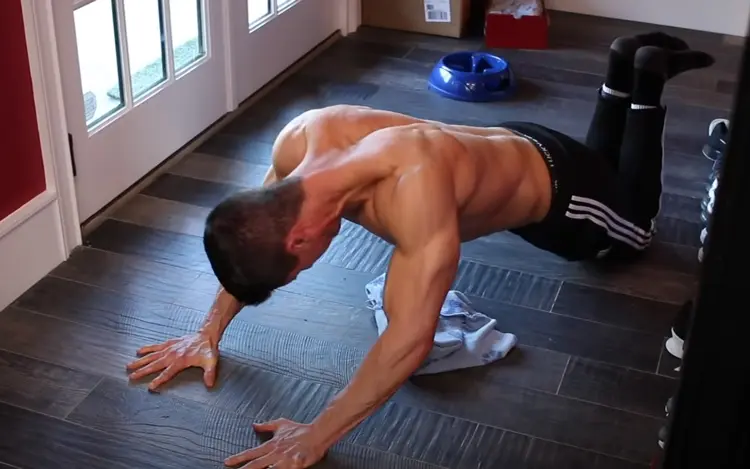
Here are a few exercise options…
The first option is to wrap a resistance band around a pullup bar (or branch) and do the straight-arm push, by just focusing on pushing the band down using the lats, without engaging the triceps.
Another alternative is to do the banded front lever raise. You’ll basically hang from a pull-up bar and push down using your arms so that your lower body lifts high up off the ground. To assist you in this exercise (it’d be very hard otherwise), you can wrap a band around your feet which will make the exercise much more possible for most people.
And finally, the last alternative is to do the bodyweight sliding pullover. This exercise is genius because it’s a challenging bodyweight movement that works the lats and improves scapular strength. You don’t need any equipment. You just have to be able to slide your knees on the floor.
So, you can do this by wearing the proper pants or by placing something slippery under your knees.
Now let’s talk about another key focus for building strength at home…
Focus #2: Horizontal pressing stability
When it comes to the king of chest exercises… the bench press, there’s much more involved than many might think. This compound movement requires much more than just lying down and pushing a bar away from your chest (at least if you want to get the best results possible from it).
“We know that the bench press is one of those exercises that doesn’t automatically come to mind when we think about stability because we’re lying on our back. But there’s a huge amount of stability required to do this right,” says Cavaliere.
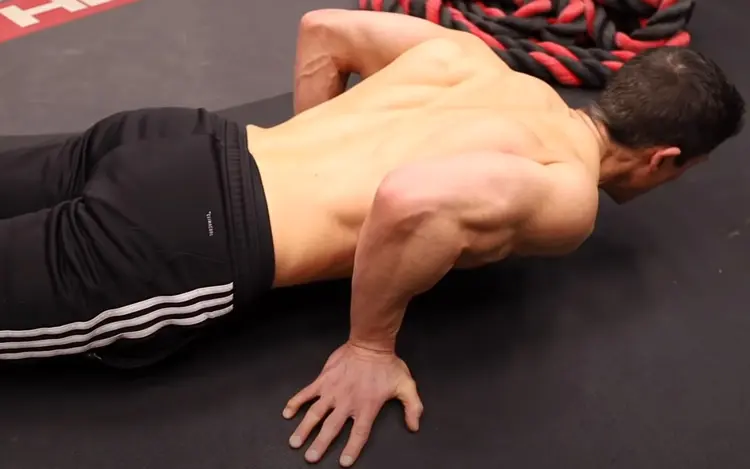
During the bench press, the bar should have a natural arc where the bar comes down to the lower chest and then back toward the head during the press (when done properly).
This means the shoulders will be highly involved due to its function and therefore, you must have good stability in this area.
How to improve shoulder stability?
Cavaliere offered the pushup saw variation as the first option. It involves doing a pushup but rather than your body moving straight up and down, you want to move your body forward during the lowering phase of the pushup. And what this does, is it mimics the bench press arc but it also forces the shoulders to stabilize your body and prevent it from moving too far forward.
This is a key component for a safe, effective, and impressive bench press.
The second option is the modified plank pushup which translates a little better into the close-grip bench press. You can do it by rotating your hands away from your body at about a 45-degree angle and keeping your arms close to your body to perform the pushups. What this variation does, is it places more of an emphasis on the long head of the tricep by bringing your arms more into extension behind your body.
The long head of the triceps is the largest of the three heads and it’s located on the innermost part of the back of the arm.
The third option is the back widow which targets the upper posterior. This movement improves scapular retraction and depression of the shoulder girdle for optimal stability during the bench press. Without stabilization during any pressing exercise, you’ll be all over the place.
For the black widow, you’ll lie on your and press your elbows into the floor to raise your upper body. Cavaliere explained that you can do these for reps or by doing a static hold.
Focus #3: Thoracic extension
The squat is a powerful lower body exercise. However, without a strong upper posterior, we compromise the bar path (and back safety) during this movement. The path of the bar during the squat should occur in a straight path. Now, some lifters do have the ability to maintain scapular retraction and they just need a form correction.

However, others lack the mobility to be able to do so. To remedy this, Cavaliere shows an effective movement called the banded walk back which involves using bands secured overhead.
Level Up Your Fitness: Join our 💪 strong community in Fitness Volt Newsletter. Get daily inspiration, expert-backed workouts, nutrition tips, the latest in strength sports, and the support you need to reach your goals. Subscribe for free!
So what you’ll do is, hold onto the bands with your arms extended overhead and maintain this position while walking backward and forward. By doing this, you’ll strengthen the upper posterior muscles that contribute to optimal thoracic extension. The more you walk back, the more you have to work to not allow your arms to move forward.
But he took it a step further and explained that to mimic the squat movement, you should practice doing the squats in this position.
But if you don’t have bands to use, there’s also a bodyweight variation you can do instead called wall slides. For this exercise, you’ll stand with your back against a wall, press your arms flat against it and then try your best to raise your arms as high as you can.
What this does, is it forces you to maintain thoracic extension while requiring the upper rear muscles to function in this position. Now you may not be able to completely extend your arms overhead at first, but Cavaliere explained that it’s something you can work on over time. Plus, you can do it several times per day/week.
Focus #4: Hip strength in the frontal (side to side) and transverse (rotational) plane
The next focus is on the hips which are crucial for movements on the feet. Cavaliere explained that the hips don’t just function during movements in the sagittal plane (flexion and extension) but they also do in the frontal (side to side) and transverse planes.
So, not working on this area of hip strength is a huge mistake and it often comes back to bite us in the butt when doing other movements.
“Most of the things that we do are sagittal plane driven, but our hips are so responsible for the stability and actually supporting our overall strength. They work in other planes, they work namely in the frontal plane controlling abduction and adduction, and they also work in the transverse plane and we need to work on the hip rotator strength as well.”
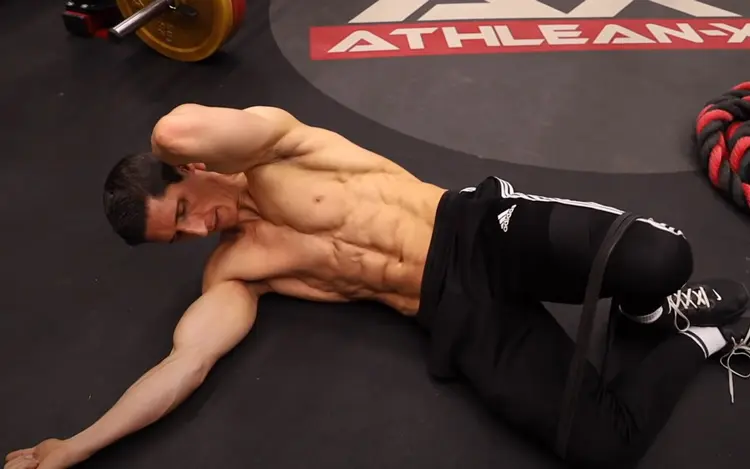
To address this, Cavaliere recommends doing the banded clamshell for the abductors (moving the legs away from the body). To do it, you’ll basically lie on your side with a band around both legs and then you’ll lift the top leg to overcome the resistance which is very effective for improving external rotation of the hips.
Because this type of focus is often neglected, most people will be surprised at how challenging this can be. The next option is adductor slide lunges. The adductors help to move the legs toward the midline of the body. Now, you can either do this holding a weight at chest height in a goblet squat position or with no weight at all.
But as Cavaliere explained, it depends entirely on your adductor strength.
“I’m going to bet that your adductors are actually pretty weak or a lot weaker than you think they are. And the irony of that all, is that the adductors are incredibly relied upon to get you out of the most difficult portion of the squat, which is the bottom.”
The adductor slide lunge is rather simple but it shouldn’t be easy if you’re doing it right. You’ll basically stand upright and then slight one leg out to the side as far as you can while your other leg remains planted. The key to this exercise is not using the non-working leg to push yourself back up but to pull the upper working leg in.
Just pretend you’re squeezing your legs together to get back to a standing position and you’ll be good to go.
The third option he offers for the abductors is a simple bodyweight exercise called the hip drop. Cavaliere has recommended this movement several times before because activates the glute medius and gives what he calls “hip hiking ability“.
The exercise involves standing lateral to a wall with your forearm resting on it vertically. You’ll keep the outside leg stable and then simply lift your hips up to one side and then let them drop down. So, you’ll have to do this for both sides but it’s not a difficult movement to do which is good.
Then the last area of focus is vertical pressing stability.
Focus #5: Vertical pressing stability
“Any time you lift your arms up over your head, the tendency is to set the stage for dysfunction because we don’t pay enough attention to what we’re doing to prepare the shoulders to do that, especially with heavy weight, says Cavaliere”.
The scapula has to be able to rotate upward in space when the arms are overhead and to ensure this occurs most optimally it’s very important to pay attention to the lower traps. But the rotator cuffs must also be an area of focus because impingement issues often occur due to a lack of strength, stability, and contribution of these muscles.
Well, if you’re a regular on the Athlean-X channel then you probably know how big of a proponent Jeff Cavaliere is of the face pull. Now, the face pull is typically performed using a cable or resistance band. But if you don’t have access to either, no problemo.
He shows a variation you can do by placing weights in a towel and performing the exercise exactly the same while in a bent-over position. He also recommends doing a press overhead to really engage the lower traps which you can also do with the towel.
Another option he provided was a banded high-to low band pull apart. This variation involves starting from the overhead position and then pulling the band apart by opening your arms as you bring them down low. This also highly activates the lower trap muscles due to the function of the scapula.
Cavaliere also offered a closed-chain (hands in contact with a surface) exercise (wall stand pushups) that improves the stability of the shoulders due to the fixed position. He says that while this exercise doesn’t allow for the same range of motion as the overhead press, it does create compression in the shoulder joint which provides stability.
But for a more advanced and challenging variation, you can do wall walks where you walk your hands forward and back against the wall with your feet up against it. This will force your shoulders to stabilize even more.
If you can’t do any variation of an upside-down shoulder exercise like the two mentioned above, the pike pushup is a viable alternative that’ll offer the same benefits to someone less advanced or at a beginner level. You’ll basically do a pushup with your butt raised high in the air and hips bent.
And that wrapped up the exercise offerings for building that brutal strength at home with minimal equipment. Cavaliere ended by explaining the importance of stability for maximizing your potential and preventing injury. He explained that these little exercises might be boring but they are very necessary for maintaining that solid foundation needed to do the more popular exercises.



